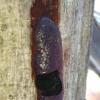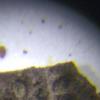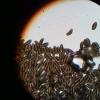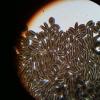
10-09-2025 17:18
 Blasco Rafael
Blasco Rafael
Hola, encontre este estiercol de vaca estos apotec

11-09-2025 16:57
Our revision of Marthamycetales (Leotiomycetes) is

02-09-2025 11:34
Thomas Læssøehttps://svampe.databasen.org/observations/10527903

10-09-2025 23:53
 Marcel Heyligen
Marcel Heyligen
Found on Robinia pseudoacasia together with Diapor

03-09-2025 21:59
Philippe PELLICIERLa Léchère, Col de la Madeleine, alt 1970m, au s

07-09-2025 11:34
 Zuzana Sochorová (Egertová)
Zuzana Sochorová (Egertová)
Hello,I have identified this fungus as Hymenoscyph
Which Xylariaceae?
Garrett Taylor,
27-12-2019 05:59
Q = (2.1) 2.4 - 3 (3.3) ; N = 35
Me = 12.4 × 4.6 µm ; Qe = 2.7
Jacques Fournier,
27-12-2019 12:07

Re : Which Xylariaceae?
Hi Garrett,
your fungus is suggestive of Pyrenomyxa, a genus revised in 2005 by Stadler et al., Mycologia 97(5): 1129-1139.
Two of the three species could match your find, P. picea and P. morganii, more likely the former because of the apparently orange brown colour of the stroma shown by your photo.
If you check the paper you should get to a more reliable identification.
Cheers,
Jacques
Garrett Taylor,
28-12-2019 05:37
Re : Which Xylariaceae?
Thanks so much, Jacques! After reading the material you suggested, it does appear your intuition that this is Pyrenomyxa picea (Ellis) M. Stadler, Læssøe & Lar. N. Vassiljeva, comb. nov. is correct in this instance. The spores here are slightly larger than reported, but this was a fresh specimen.
P. morganii has only been collected in Eastern Russia. It's KOH-extractable pigments are all of the colors, even purple after a time.
P. invocans is also reddish brown and also found near me, but it's KOH-extractable pigments are orange, not green.
This isn't the first time for me finding this Genus, so it feels extra great to know what it is!
*I edited the spore size as I truncated the first part of the length measurment originally.
P. morganii has only been collected in Eastern Russia. It's KOH-extractable pigments are all of the colors, even purple after a time.
P. invocans is also reddish brown and also found near me, but it's KOH-extractable pigments are orange, not green.
This isn't the first time for me finding this Genus, so it feels extra great to know what it is!
*I edited the spore size as I truncated the first part of the length measurment originally.
Jacques Fournier,
28-12-2019 16:33

Re : Which Xylariaceae?
Thanks for our enthusiastic answer Garrett.
Actually I just know Pyrenomyxa from literature and I do not expect to find it in Western Europe.
Actually I just know Pyrenomyxa from literature and I do not expect to find it in Western Europe.
I you ever come across some material in good condition again, I would be very grateful if you can send me a sample, gently air-dried, wrapped in paper and posted by ordinary mail.
Thanks a lot!
Jacques
Garrett Taylor,
29-12-2019 04:45
Re : Which Xylariaceae?
There are a few of them on that log that looked like they were in nice shape, if you send me your address I will glady try to see if I can get some off in one piece and send a sample along. My email is taygamu at gmail.com





